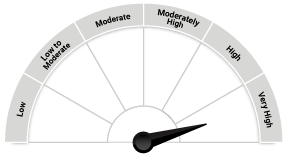Equity monthly view for August 2021
Posted On Tuesday, Sep 07, 2021
Monthly Equity View by Sorbh Gupta
S&P BSE SENSEX increased by 9.4% on a total return basis in the month of August-21. After trailing on a YTD basis till last month, it has hurriedly overtaken its developed market peers such as S&P 500 & Dow Jones Industrial Average Index, with a stupendous move this month. It has had a large outperformance of 6.8% vs MSCI Emerging Market Index too.
After a long hiatus, the broader market has underperformed vs. Sensex this month. The S&P BSE Midcap Index appreciated by 3.42% and the S&P BSE Smallcap Index rose by 0.63%. With this month’s performance, the Midcap & the Smallcap index have given the return of 33.91% & 49.6%. on a YTD basis.
Quantum Long Term Equity Value Fund saw a 3.98% appreciation in its NAV in the month of August 2021. This compares to a 7.43% appreciation in its benchmark S&P BSE 200. Cash in the scheme stood at approximately 7.3% at the end of the month. Some of the benchmark heavyweights which the fund doesn’t own or have an underweight vis à vis the benchmark moved up sharply resulting in underperformance this month. Our portfolio remains positioned towards cyclical like large financials, select commodities & consumer discretionary. We are sticking to names that are market leaders in their respective domains, have capable management & strong balance sheets.
Strong Q1FY22 GDP growth on a lower base
India’s GDP rose by 20.1% in Q1FY22. However, these numbers are veiled by a favourable base effect (Q1FY21 had seen a very sharp contraction due to a stringent nationwide lockdown). When viewed sequentially, real GDP declined by 17% in Q1FY22 (vs. Q4FY21). This again is an impact of state-level lockdowns amidst a raging second wave in April-21 & May-21. The economic indicators are suggesting a continuation of the macro recovery. Most of the indicators like electricity consumption & e-way bill generation have moved above the pre-covid-19 levels of February 2020. As the pent-up demand (from second-wave-related lockdowns) wanes, a strong consumption demand in the festive season will be the key to continued economic recovery
Monsoons trailing below normal:
Contrary to expectations of a normal monsoon, at the start, cumulative rainfall is 10% (630mm) below normal (historical average of 697mm) till August end. Only the South region has received above-normal rainfall. East & North East/Central/North West regions have received below normal rainfall. The summer season (Kharif) planting is almost over & the sowing area is down by 2% y-o-y to 106mn hectares due to the dry spell of rainfall in July-August. Sowing area for cash crops like cotton has seen a sharp fall but food crops acreage is closer to the 10-year average. If the lower rainfall also affects crop yields then deficient production can lead to higher food inflation, especially in pulses & oilseeds. Lower production of cereals & rice can be taken care of through buffer stocks lying with the government.
The water storage of 130 reservoirs in the country is at 109 BCM vs 131BCM last year (113.6BCM of 10 years average). In terms of utilisation, storage was at 63% of the capacity vs 76% of the capacity of last year. The water storage levels at the end of September (the official end of monsoon season) will be important for winter planting (rabi) as winter crops rely more on irrigation.
Fed taper talks can make the FPI flow volatile in the near term.
August-21 has seen positive flows from FPIs to the tune 284 mn. On a YTD basis, FPI inflows stand at US$ 7.09 bn. Upbeat by the buoyant economic data, the US Federal Reserve has outlined its plan to prepone the ‘normalisation’ of monetary policy. It plans to taper its asset purchases in CY2021 itself albeit gradually. All this fed tapering noise gives a sense of Déjà vu. In May 2013 when the fed reserve talked about tapering asset purchases the INR depreciated 15% against the US$ in the next four months & Indian stock markets also faced bouts of volatility. This time, India’s external position is much stronger on account of a lower current account deficit (CAD) and larger forex reserves so the pressure on INR should be lesser. Domestic institutions are again seeing positive flows in the last few months from retail investors, this should support the stock markets in case of FII flows turn negative in the near term.
Economy & Stocks: Entering the second phase of cyclical recovery
The economic & equity market recovery from the March-20 bottom has played out exactly as a leaf out of an economic textbook. And very similar to what happened immediately after the previous two economic downcycles 2004-05 & 2009-10.
The economy goes into recession. Central banks respond by a cut in interest rates & the government’s role out fiscal stimulus for economic recovery. Easy liquidity & stimulus help asset prices (stocks & real estate) recover & aid consumption demand. Supply response from commodity producers lags demand uptick resulting in price increases. Corporate profitability improves as sales increase faster than the cost.
As we enter the second stage of economic expansion, there are two possible scenarios that can be envisaged:
Scenario One | Scenario Two |
The demand recovery continues, capacity utilisation of companies improve & they invest in creating newer capacity. The job market is buoyant. Inflation continues to remain high, but it is demand-driven. Companies can pass on higher costs due to better demand. The corporate earning upgrade cycle continues pushing stock prices higher (à la 2005-08) | The demand recovery fizzles out after the initial recovery. Companies do not invest in newer factories as existing capacities remain unutilised. The job market remains weak. Inflation remains high & corporate profitability comes under pressure as they cannot pass on the higher input cost. The economy is stuck in a stagflation (high inflation low growth) environment. Stock prices stagnate or move up only driven by liquidity. (à la 2010-13) |
The uptick in exports & quick improvement sectors like real estate (strong GDP multiplier) & IT (largest creator of white-collar jobs) indicates a higher probability of scenario one playing out. Our higher allocation towards cyclicals in Quantum Long Term Equity Value Fund reflects this belief. Pick up in credit demand from corporates for capacity expansion will be a very important metrics to track for the next six to nine months.
Improvement in macro economy will provide tailwind to corporate profitability. We remain positive on Indian equities from a long-term perspective. Retail investors can stagger their investments or choose SIPs to tide over near-term volatility emanating from a possible Covid-19 third wave or U.S Fed’s taper tantrum.
Data source: NSDL
| Name of the Scheme | This product is suitable for investors who are seeking* | Riskometer |
| Quantum Long Term Equity Value Fund (An Open Ended Equity Scheme following a Value Investment Strategy) | • Long term capital appreciation • Invests primarily in equity and equity related securities of companies in S&P BSE 200 index. |  Investors understand that their principal will be at Very High Risk |
* Investors should consult their financial advisers if in doubt about whether the product is suitable for them.
The Risk Level of the Scheme in the Risk-o-Meter is based on the portfolio of the scheme as on August 31, 2021.
Disclaimer, Statutory Details & Risk Factors:
The views expressed here in this article / video are for general information and reading purpose only and do not constitute any guidelines and recommendations on any course of action to be followed by the reader. Quantum AMC / Quantum Mutual Fund is not guaranteeing / offering / communicating any indicative yield on investments made in the scheme(s). The views are not meant to serve as a professional guide / investment advice / intended to be an offer or solicitation for the purchase or sale of any financial product or instrument or mutual fund units for the reader. The article has been prepared on the basis of publicly available information, internally developed data and other sources believed to be reliable. Whilst no action has been solicited based upon the information provided herein, due care has been taken to ensure that the facts are accurate and views given are fair and reasonable as on date. Readers of this article should rely on information/data arising out of their own investigations and advised to seek independent professional advice and arrive at an informed decision before making any investments.
Mutual fund investments are subject to market risks read all scheme related documents carefully.
Please visit – www.QuantumAMC.com to read scheme specific risk factors. Investors in the Scheme(s) are not being offered a guaranteed or assured rate of return and there can be no assurance that the schemes objective will be achieved and the NAV of the scheme(s) may go up and down depending upon the factors and forces affecting securities market. Investment in mutual fund units involves investment risk such as trading volumes, settlement risk, liquidity risk, default risk including possible loss of capital. Past performance of the sponsor / AMC / Mutual Fund does not indicate the future performance of the Scheme(s). Statutory Details: Quantum Mutual Fund (the Fund) has been constituted as a Trust under the Indian Trusts Act, 1882. Sponsor: Quantum Advisors Private Limited. (liability of Sponsor limited to Rs. 1,00,000/-) Trustee: Quantum Trustee Company Private Limited. Investment Manager: Quantum Asset Management Company Private Limited. The Sponsor, Trustee and Investment Manager are incorporated under the Companies Act, 1956.
Related Posts
-

Equity Monthly View for April 2025
Posted On Wednesday, May 07, 2025
April 2025 witnessed a reversal in FPI flows and an ease of global tariff related uncertainties, leading to a rise in broader indices.
Read More -

Equity Investments and Highways: Navigating Risks with a Seat-belt
Posted On Wednesday, Apr 16, 2025
Navigating the fast-paced investing world is like driving on a bustling highway—without risk mitigation strategies, you're as vulnerable as a driver speeding on a highway without a seat belt.
Read More -

A Strong Year Starts with a Strong Portfolio—Time for a Financial Health Check!
Posted On Tuesday, Apr 08, 2025
A new financial year is here—a clean slate, a fresh start, and a chance to get your investments in shape.
Read More



